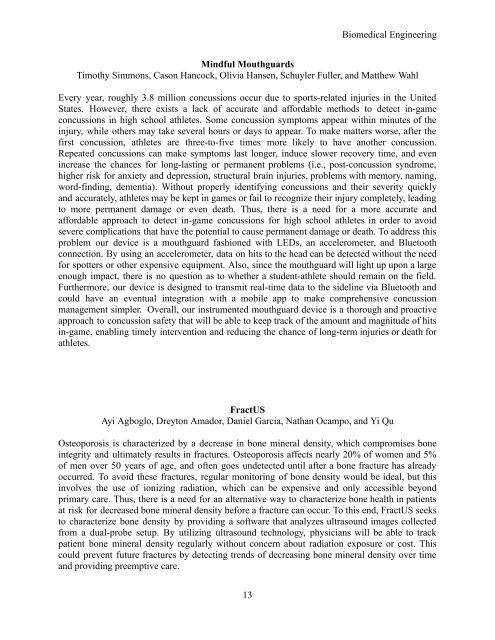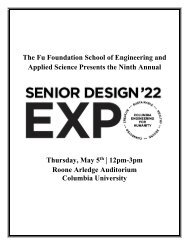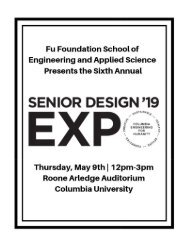You also want an ePaper? Increase the reach of your titles
YUMPU automatically turns print PDFs into web optimized ePapers that Google loves.
Biomedical Engineering<br />
Mindful Mouthguards<br />
Timothy Simmons, Cason Hancock, Olivia Hansen, Schuyler Fuller, and Matthew Wahl<br />
Every year, roughly 3.8 million concussions occur due to sports-related injuries in the United<br />
States. However, there exists a lack of accurate and affordable methods to detect in-game<br />
concussions in high school athletes. Some concussion symptoms appear within minutes of the<br />
injury, while others may take several hours or days to appear. To make matters worse, after the<br />
first concussion, athletes are three-to-five times more likely to have another concussion.<br />
Repeated concussions can make symptoms last longer, induce slower recovery time, and even<br />
increase the chances for long-lasting or permanent problems (i.e., post-concussion syndrome,<br />
higher risk for anxiety and depression, structural brain injuries, problems with memory, naming,<br />
word-finding, dementia). Without properly identifying concussions and their severity quickly<br />
and accurately, athletes may be kept in games or fail to recognize their injury completely, leading<br />
to more permanent damage or even death. Thus, there is a need for a more accurate and<br />
affordable approach to detect in-game concussions for high school athletes in order to avoid<br />
severe complications that have the potential to cause permanent damage or death. To address this<br />
problem our device is a mouthguard fashioned with LEDs, an accelerometer, and Bluetooth<br />
connection. By using an accelerometer, data on hits to the head can be detected without the need<br />
for spotters or other expensive equipment. Also, since the mouthguard will light up upon a large<br />
enough impact, there is no question as to whether a student-athlete should remain on the field.<br />
Furthermore, our device is designed to transmit real-time data to the sideline via Bluetooth and<br />
could have an eventual integration with a mobile app to make comprehensive concussion<br />
management simpler. Overall, our instrumented mouthguard device is a thorough and proactive<br />
approach to concussion safety that will be able to keep track of the amount and magnitude of hits<br />
in-game, enabling timely intervention and reducing the chance of long-term injuries or death for<br />
athletes.<br />
FractUS<br />
Ayi Agboglo, Dreyton Amador, Daniel Garcia, Nathan Ocampo, and Yi Qu<br />
Osteoporosis is characterized by a decrease in bone mineral density, which compromises bone<br />
integrity and ultimately results in fractures. Osteoporosis affects nearly 20% of women and 5%<br />
of men over 50 years of age, and often goes undetected until after a bone fracture has already<br />
occurred. To avoid these fractures, regular monitoring of bone density would be ideal, but this<br />
involves the use of ionizing radiation, which can be expensive and only accessible beyond<br />
primary care. Thus, there is a need for an alternative way to characterize bone health in patients<br />
at risk for decreased bone mineral density before a fracture can occur. To this end, FractUS seeks<br />
to characterize bone density by providing a software that analyzes ultrasound images collected<br />
from a dual-probe setup. By utilizing ultrasound technology, physicians will be able to track<br />
patient bone mineral density regularly without concern about radiation exposure or cost. This<br />
could prevent future fractures by detecting trends of decreasing bone mineral density over time<br />
and providing preemptive care.<br />
13








